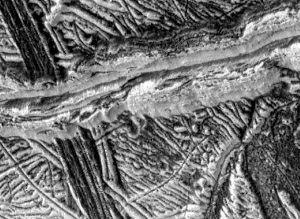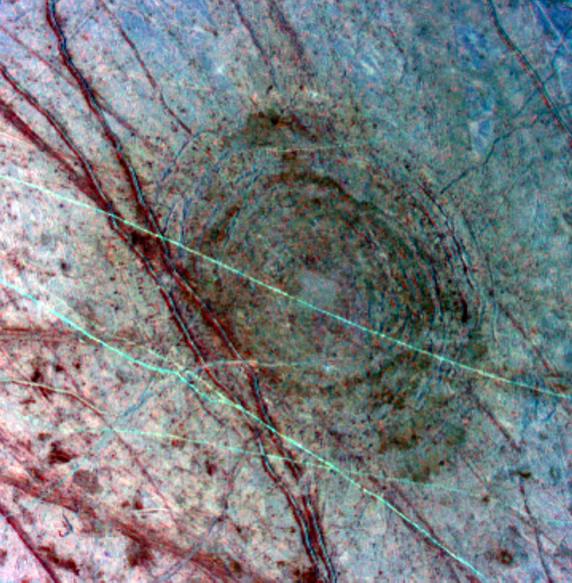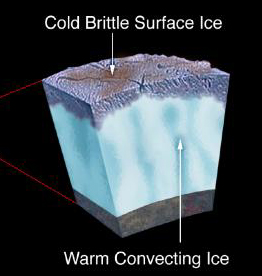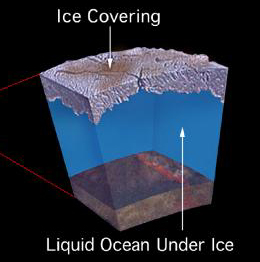
Europa is one of the four largest moons of Jupiter. (So far, over 60 Jupiter moons have been found). Europa is just a bit smaller than Earth's Moon, but has twice as much water as the whole Earth. Its surface is often renewed, so there are no craters. Some scientists think Europa may have a deep liquid ocean below a crust of ice, and where there is liquid water, could there be life? Europa is so cold that its surface ice is as hard as rocks are on Earth. The lines on Europa's surface may be where the ice has cracked, filled with water from below, and refrozen.
This image was made by the Galileo spacecraft.

Strange surface features of Europa look as if they could be cracks in ice.
Image by the Galileo spacecraft.

This "bulls-eye" pattern is about the size of the Big Island of Hawaii. It seems to be a scar from the impact of a mountain-sized comet or asteroid.
This Galileo image is color enhanced to show features.

There are different ideas about what lies beneath the brittle surface ice of Europa. This drawing shows "warm," slushy ice that moves around.

There are different ideas about what lies beneath the brittle surface ice of Europa. This drawing shows a deep, liquid ocean lying under the ice.

